According to the U.S. Bureau of Labor Statistics, more than 20,000 workplace hearing loss cases occur annually, many resulting in permanent hearing loss.
What are the long-term effects of an mismanaged hearing program?
How is it making the biggest impact on today’s work force, and the overall health of its workers?
This article will examine the problems at hand, and the solution at large.
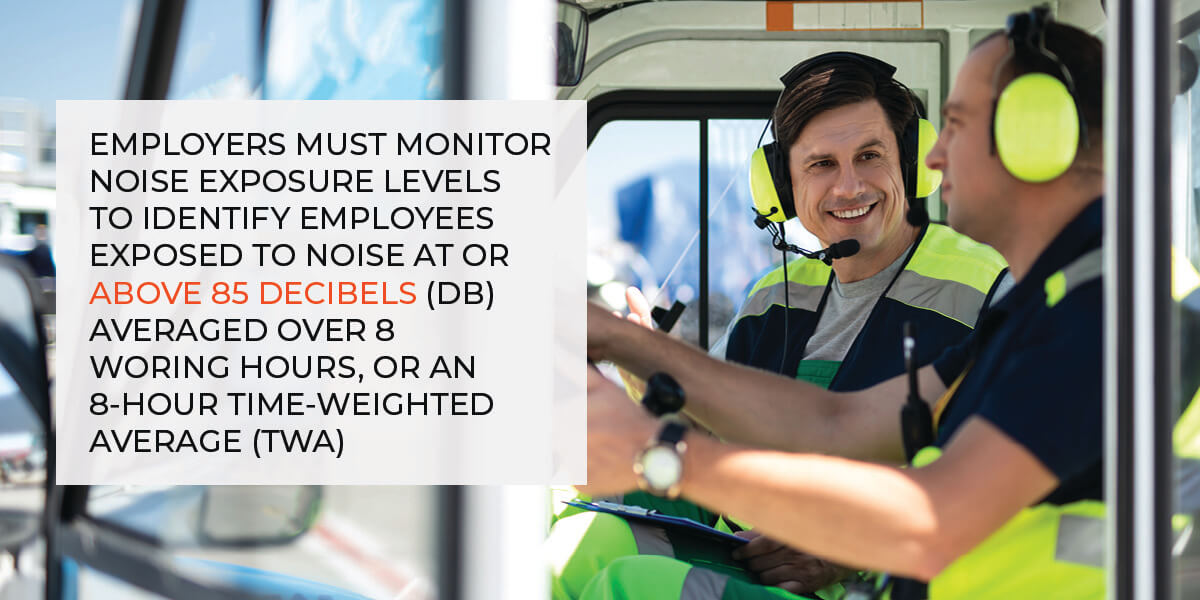
30 Years of Hearing Damage, Little Change in the Workplace
In the last 30 years, there’s been little improvement made of work-related hearing damage.
According to a recent report published by NIOSH, hearing loss has improved less than 1 percent from 1981-2010.
The National Institute or Occupational Safety and Health (NIOSH) recommends that workers are not exposed to noise at a level that exceeds 85 decibels over 8 consecutive hours.
Exposure to high levels of noise causes hearing loss and may cause other harmful health effects as well.
The extend of damage depends mostly on the intensity of the noise an employee is exposed to, as well as how long and often they are exposed to it.
Over time – and without taking the proper hearing protection measures – permanent hearing damage can take place, resulting in two big conditions – one that affects our mental health, the other affecting our physical health:
- Social isolation. The inability to hear may cause depression, an isolation from social situations. You may not want to be with people as much, and when you are you may not engage in conversation as much, says John Hopkins expert, Frank Lin, M.D.
- Dementia. “Brain scans show us that hearing loss may contribute to a faster rate of atrophy in the brain,” which can contribute to dementia.
In a study that tracked 639 adults for nearly 12 years, Johns Hopkins expert Frank Lin, M.D., Ph.D, and his colleagues found that mild hearing loss doubled dementia risk.
Moderate loss tripled risk, and people with a severe hearing impairment were five times more likely to develop dementia.
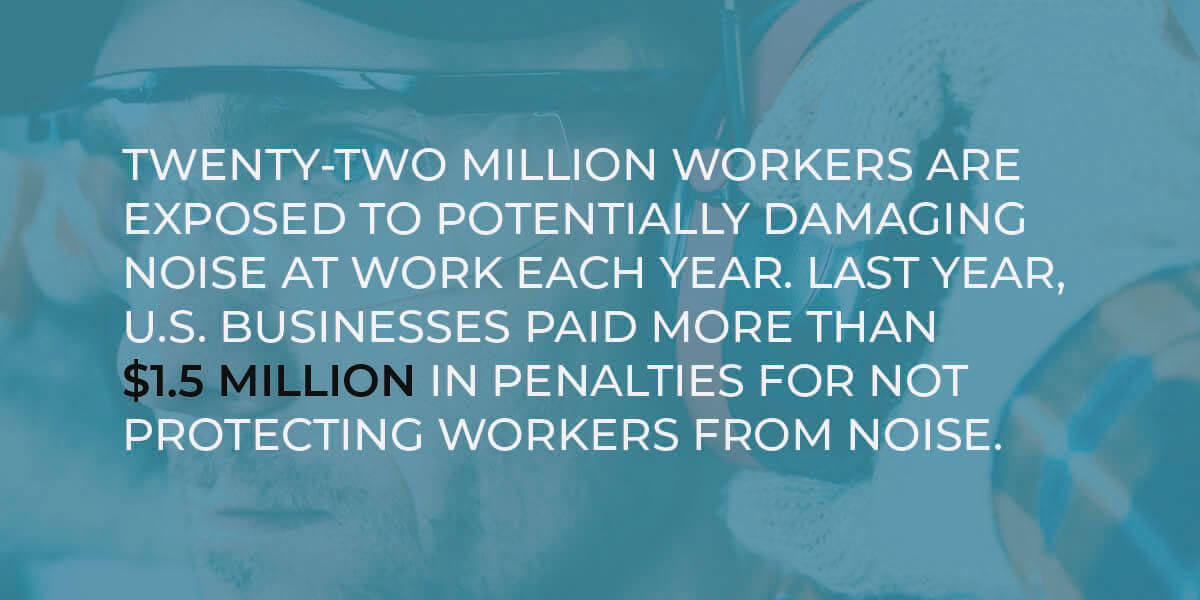
Studies Lead Us to Unexpected Insights
The University of Colorado’s Department of Speech Language and Hearing Science examined “how the brain is affected after hearing loss.
Neuroplasticity, otherwise known as our brain’s ability to change over time, shows us that when we experience hearing loss, the part of the brain devoted to hearing actually becomes reorganized, and essentially “assigned” to other functions.
Meaning?
Even those who have mild hearing loss can experience cognitive decline.
The areas of the brain assigned to hearing has been weakened, so parts of the brain that are functioning on a higher level compensate for those areas that are weaker.
They step in, take over for hearing, and leave them unavailable to do their primary job.
This leads to the powerful impact of ‘reorganization’ and our bodies ability to suffer physically when preventative measures aren’t taken early on. A hearing conservation program won’t just improve the quality of their work while on the job. It could prevent cognitive decline altogether.
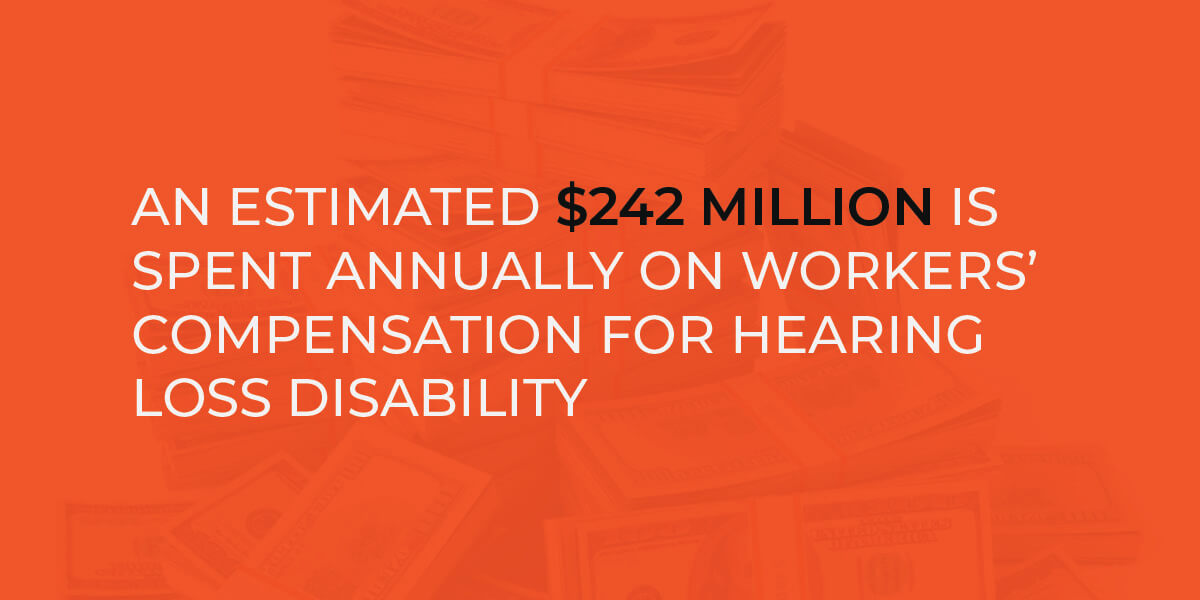
The Top 5 At-Risk Occupations Causing Hearing Loss
Your job may be affecting your hearing (and has been for years) without you knowing it.
OSHA identifies potential hearing loss as being exposed to noise above 85 decibels (dB) averaged over 8 working hours, or an 8-hour time-weighted average (TWA).
Employers must monitor noise exposure levels to identify employees exposed to noise at or above 85 decibels (dB) averaged over 8 working hours, or an 8-hour time-weighted average (TWA).
Additionally, employers must provide baseline audiograms, and annual audiograms within 1 year of the baseline.
According to the Centers for Disease Control and Prevention, four million employees head to a work environment that exposes them to noises that reach high decibels every day. Think hearing loss is just attributed to long-term, daily exposure?
Think again.
Hearing loss on the job can also come from a single occurrence of high decibel noises!
Here are the top industries with the highest number of recordable hearing loss cases:
- Manufacturing
- Construction/Mining/Carpentry
- Entertainment/Nightlife
- Military
- Oil and Gas
- Agriculture/Farming
- Aviation
- Emergency Response
- Racing
- Carpentry
- Athletes
The good news?
Hearing loss is almost entirely preventable.
Let’s examine what we can all do to support employees hearing health.
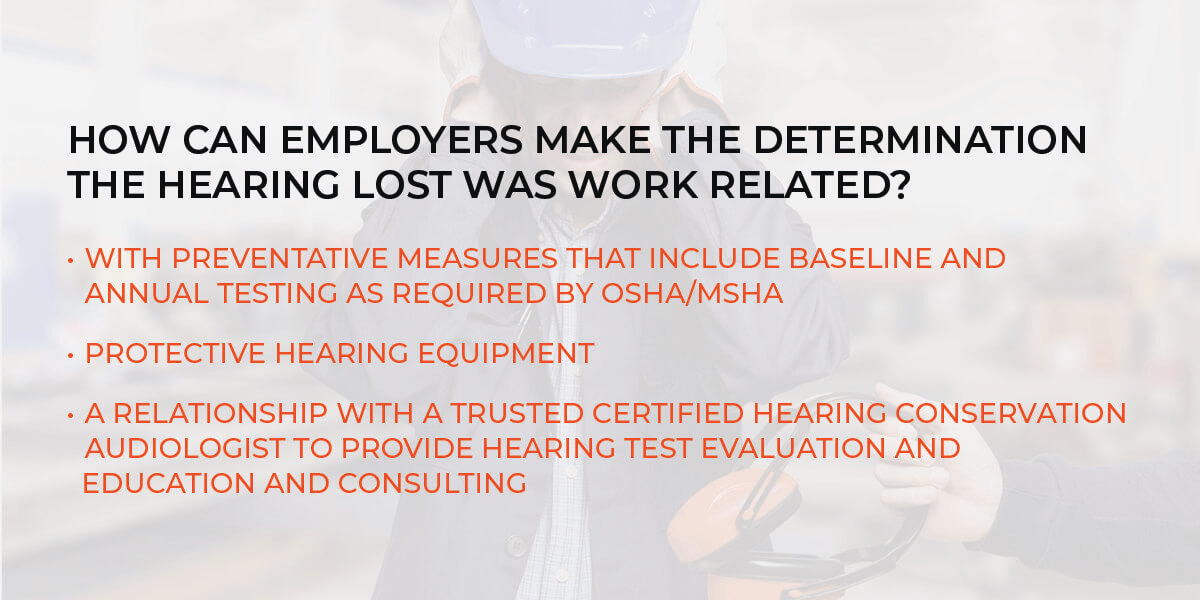
Let’s Take a Closer Look at Dangerous Noise Levels on the Job
When hearing loss occurs and is left untreated, employees suffer in many ways—and so does their employer:
- Hearing loss left untreated demonstrated a higher rate of unemployment.
- Untreated hearing loss can “decrease one’s annual income by as much as $30,000, as reported by the Hearing Health Foundation.
- 34 percent of those workers exposed to loud noises report to voluntarily skip hearing protection!
Some of the loudest and riskiest noises resulting in hearing loss in the workplace include:
- Air hammer
- Disk sander
- Industrial vacuum
- Running engine
- Electric drill
- Firearms
- Car horn.
To put it in perspective, this is how quickly a simple piece of machinery can surpass 85 decibels and constitute hearing loss, if the employee is unprotected:
- Jackhammer = 130 dB
- Driving a tractor (with headphones on) = 100 dB
- Snow blower = 106 dB
- Chainsaw = 112 dB
- Typical conversation with a co-worker = 60 dB
- Leaf blower = 115 dB
- Gun shot = 140 dB
- Motorcycle = 96-100 dB
3 Immediate Ways to Prevent Hearing Loss in the Workplace
So, how can you prevent hearing loss from occurring in the workplace especially when you have hundreds if not thousands of employees to manage? Through a series of simple, preventative steps. Here’s 3 ways to do it:
1. Give Your Employees an Education!
Keeping employees safe is about implementing two things: safety education, and employee accountability. Make sure your employees know the value behind hearing protection.
Give them the tools they need to staying safe at work with the proper protection gear. In addition, give your supervisors the role of limiting loud noises.
Some ways you can do this are by: keeping employees as far away from the noise as possible, isolating loud machines being used as much as possible, and asking employees if they require extra hearing protection.
2. Equipment Control
Don’t just hold your employees accountable for their safety – hold your supervisors accountable, too. Delegate the responsibility of doing a ‘safety check’ for the equipment used. Do any tools need to be replaced or modified?
Which ones need to be repaired?
You can even run the noisiest machines during the shifts that occupy the fewest amount of people.
Now, take it one step further!
Can you delegate any areas of your office/warehouse for employees to work in a quiet area – away from the noise?
Giving employees this opportunity and flexibility to work quietly won’t just help to minimize hearing damage, it will make them feel valued and cared for.
(There’s no price on the value of that!)
3. The (Economic) Cost of Hearing Loss
There’s a steep price to pay when your employees don’t follow safety protocol.
They don’t just lose their hearing – they become one of the 30 million Americans to suffer from hearing loss and to do their job safely.
Implementing hearing conservation is the key to keeping healthcare and workers comp fees down, while your workforce stays on top.
Axiom’s occupational health program protects your company’s most valuable assets – your employees.
According to the Occupational Safety and Health Administration, noise-induced hearing loss can be temporary or permanent.
Temporary hearing loss results from short-term exposures to noise, with normal hearing returning after a period of rest.
Typically, prolonged exposure to high noise levels over a period of time gradually causes permanent damage.
OSHA’s hearing conservation program is designed to protect workers with significant occupational noise exposures from hearing impairment, even if they are subject to such noise exposures over their entire working lifetimes.
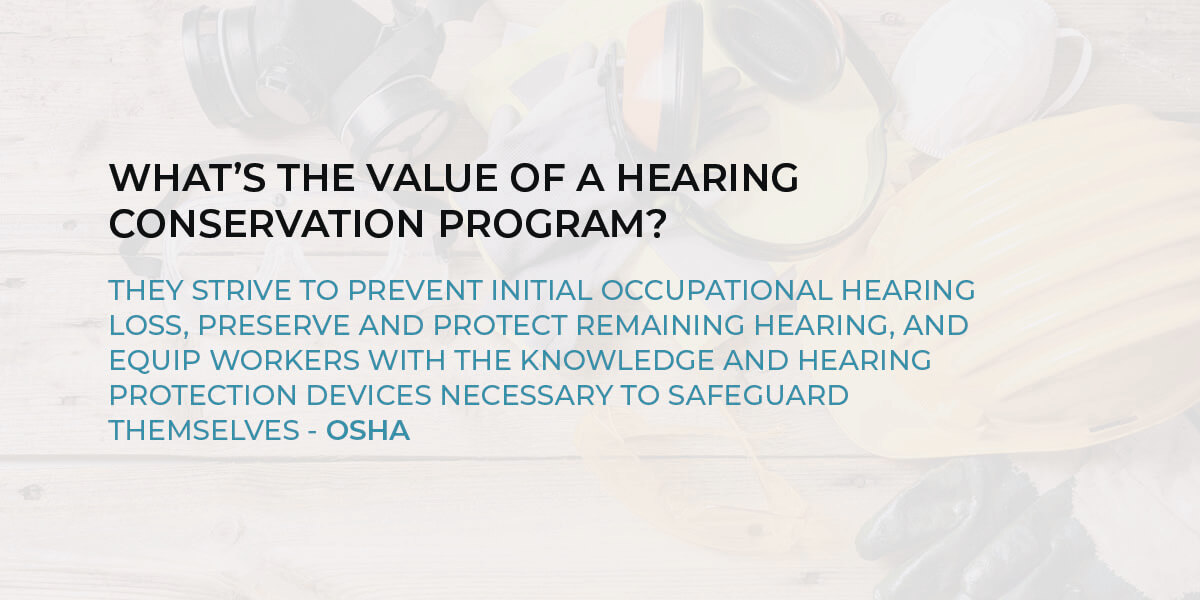
Why Do You Need a Hearing Conservation Program?
A hearing conservation program requires employers to monitor noise exposure levels in a way that accurately identifies employees exposed to noise at or above 85 decibels (dB) averaged over 8 working hours, or an 8-hour time-weighted average (TWA).
Employers must monitor all employees whose noise exposure is equivalent to or greater than a noise exposure received in 8 hours where the noise level is constantly 85 dB.
Employers must repeat monitoring whenever changes in production, process, or controls increase noise exposure.
These changes may mean that more employees need to be included in the program or that their hearing protectors may no longer provide adequate protection.
Employees are entitled to observe monitoring procedures and must receive notification of the results of exposure monitoring.
Here’s what’s involved in a formal hearing program:
1. Audiometric Testing
Audiometric testing monitors an employee’s hearing over time.
The employer must establish and maintain an audiometric testing program. The important elements of the program include baseline audiograms, annual audiograms, training, and follow-up procedures.
Employers must make audiometric testing available at no cost to all employees who are exposed to an action level of 85 dB or above, measured as an 8-hour TWA.
The employee needs a referral for further testing when test results are questionable or when related medical problems are suspected.
If additional testing is necessary or if the employer suspects a medical pathology of the ear that is caused or aggravated by wearing hearing protectors, the employer must refer the employee for a clinical audiological evaluation or ontological exam, as appropriate.
There are two types of audiograms required in the hearing conservation program: baseline and annual audiograms.
2. Audiogram Follow-up
The employer must fit or refit any employee showing a standard threshold shift (STS) with adequate hearing protectors, show the employee how to use them, and require the employee to wear them.
Employers must notify employees within 21 days after the determination that their audiometric test results show an STS.
Some employees with an STS may need further testing if the professional determines that their test results are questionable or if they have an ear problem thought to be caused or aggravated by wearing hearing protectors.
If the suspected medical problem is not thought to be related to wearing hearing protection, the employer must advise the employee to see a physician.
3. Required Hearing Protection/Training
Employers must provide hearing protectors to all workers exposed to 8-hour TWA noise levels of 85 dB or above. Such requirement ensures that employees have access to protectors before they experience any hearing loss.
Workers who understand the reasons for the hearing conservation programs and the need to protect their hearing will be more motivated to wear their protectors and take audiometric tests. Employers must train employees exposed to TWAs of 85 dB and above at least annually in the effects of noise; the purpose, advantages, and disadvantages of various types of hearing protectors; the selection, fit, and care of protectors; and the purpose and procedures of audiometric testing.
4. Recordkeeping Requirements
Employers must keep noise exposure measurement records for 2 years and maintain records of audiometric test results for the duration of the affected employee’s employment. Audiometric test records must include the employee’s name and job classification, date, examiner’s name, date of the last acoustic or exhaustive calibration, measurements of the background sound pressure levels in audiometric test rooms, and the employee’s most recent noise exposure measurement.
Employers are also required to record work-related hearing loss cases when an employee’s hearing test shows a marked decrease in overall hearing.
5. Program Management
Considering the strict mandates for hearing conservation, an employer must develop and implement an effective monitoring program when information indicates that any employee’s exposure may equal or exceed the OSHA requirement.
Should you need assistance with implementation, Axiom’s Precept OHP protects your company’s most important resource – your employees, provides a safe and healthful workplace and maintains compliance with governmental regulations.
6. Featured Services
- Complete Hearing Conservation Program
- Baseline audiograms, annual audiograms
- Evaluation of audiograms
- Follow-up procedures as necessary
What is the Audiologist’s Role in Determining Hearing Loss?
The certified hearing conservationists that make up Axiom Medical’s Occupational Health team are experts in reducing exposure to hearing loss and decreasing OSHA fines and workers’ comp claims. Hearing conservation does not need to be difficult to implement.
In fact, it’s one of the easiest programs to delegate! We provides a one-stop solution for your baseline and annual testing needs.
Hearing loss can be quick to develop, but easy to prevent.
This is the role of our certified hearing conservationists, who can:
- Perform audiometric evaluations
- Provide record keeping
- Provide ongoing education and consulting to minimize future hearing loss.
Axiom Medical offers occupational health programs:
- Before you employees start the job
- While they work, and;
- When they leave.
From hearing conservation and drug testing, to industry specific silica testing programs and educational and compliance programs, we offer the tools necessary for your employees to live, work and thrive. Contact us today at +1 (877) 502-9466 to learn how we can help you!

Heather lives and writes by the motto, “No coffee, no workee,” and is passionate about helping others live a happier and healthier life. When she’s not writing away, you can find her playing basketball with her two sons, planning her next getaway “somewhere tropical” or trying out a new recipe with chocolate as the main ingredient.
Find out more about our Injury Case Management services or our Occupational Health Programs.










